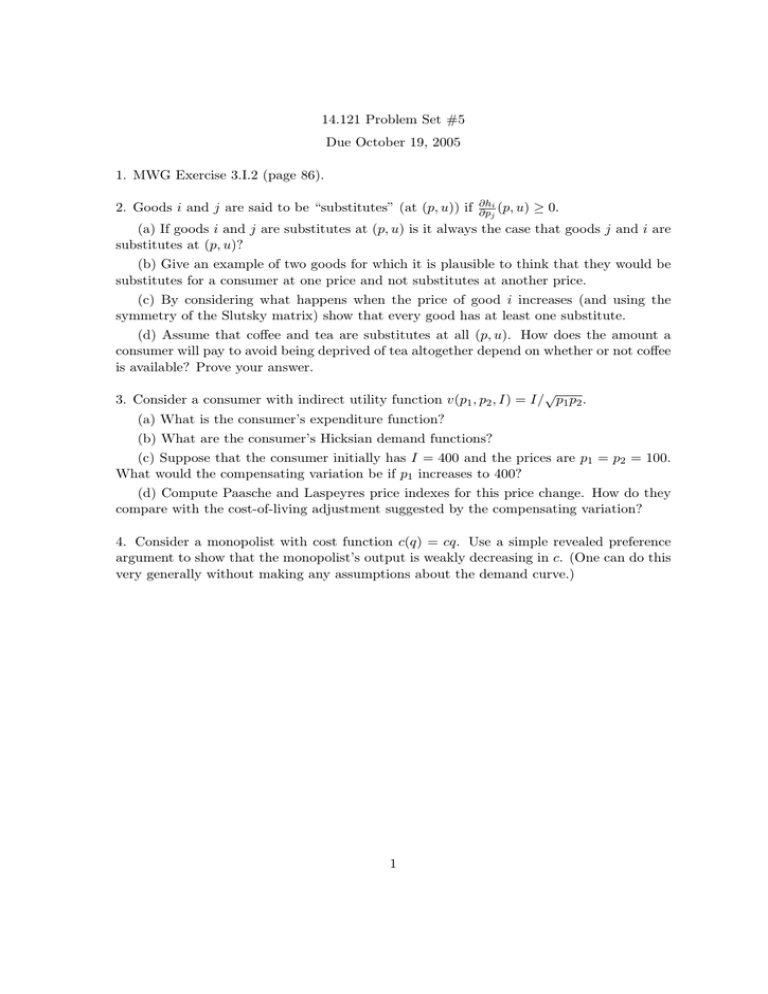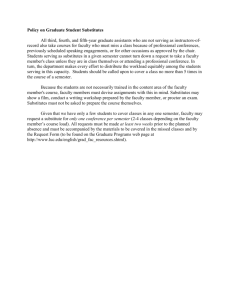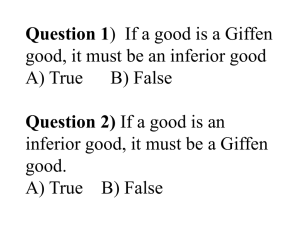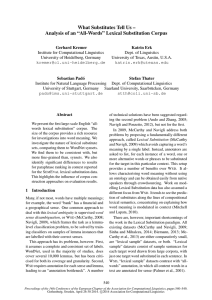14.121 Problem Set #5 Due October 19, 2005
advertisement

14.121 Problem Set #5 Due October 19, 2005 1. MWG Exercise 3.I.2 (page 86). 2. Goods i and j are said to be “substitutes” (at (p, u)) if ∂hi ∂pj (p, u) ≥ 0. (a) If goods i and j are substitutes at (p, u) is it always the case that goods j and i are substitutes at (p, u)? (b) Give an example of two goods for which it is plausible to think that they would be substitutes for a consumer at one price and not substitutes at another price. (c) By considering what happens when the price of good i increases (and using the symmetry of the Slutsky matrix) show that every good has at least one substitute. (d) Assume that coffee and tea are substitutes at all (p, u). How does the amount a consumer will pay to avoid being deprived of tea altogether depend on whether or not coffee is available? Prove your answer. √ 3. Consider a consumer with indirect utility function v(p1 , p2 , I) = I/ p1 p2 . (a) What is the consumer’s expenditure function? (b) What are the consumer’s Hicksian demand functions? (c) Suppose that the consumer initially has I = 400 and the prices are p1 = p2 = 100. What would the compensating variation be if p1 increases to 400? (d) Compute Paasche and Laspeyres price indexes for this price change. How do they compare with the cost­of­living adjustment suggested by the compensating variation? 4. Consider a monopolist with cost function c(q) = cq. Use a simple revealed preference argument to show that the monopolist’s output is weakly decreasing in c. (One can do this very generally without making any assumptions about the demand curve.) 1






